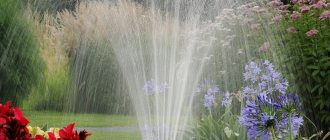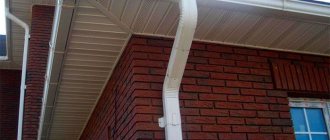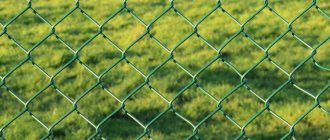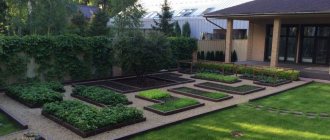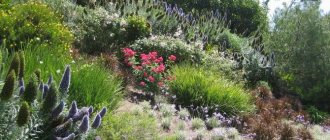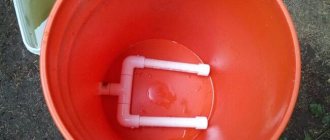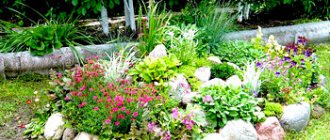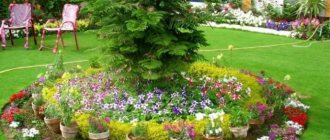SHARE ON SOCIAL NETWORKS
FacebookTwitterOkGoogle+PinterestVk
Caring for a summer cottage, greenhouse, flower bed or lawn takes a lot of effort and time. To maximize labor optimization, you can organize automatic watering yourself, choosing the necessary irrigation system. The automatic system involves uniform and regular watering, which reduces water consumption, increases productivity and improves the appearance of plants. How to organize it correctly, depending on the selected type, is described in this article.
Installing an automatic irrigation system will allow you to irrigate the site on a schedule without additional user intervention
Features of an automatic watering system at the dacha
Automatic watering of a site is a special technical complex that ensures uniform and regular water supply to plants in a certain area. The system can be classified as landscape irrigation. It consists of hoses, sprinklers, taps, a pump, various valves and a controller that operates based on a programmed program. Automatic watering works according to the schedule entered into the control program.
Atopirrigation systems can be used for all types of plantings
The so-called “smart rain” system is often used in winter gardens, parks, greenhouses, and industrial greenhouses. It is also installed on a summer cottage of any size, thanks to which you can control the watering of the vegetable garden, lawn, garden and flower beds.
Among the main advantages of a do-it-yourself automatic watering system at the dacha are the following:
- ease of operation;
- no need to independently water plants in a summer cottage or greenhouse;
- the ability to set the required intensity and frequency of watering;
- automatic watering reacts sharply to environmental humidity, so the system will automatically turn off during rain, which will save water;
- the ability to install the system to operate by the hour and in a specific area of the garden or greenhouse;
- durability.
There are three types of automatic irrigation systems: sprinkling, drip irrigation and subsoil irrigation - each option has distinctive features and is selected based on the nature of the site and the types of green spaces.
Installing an automatic watering system on the site will save owners a lot of time and effort spent on watering plants independently.
Automatic watering with sprinkler
A modified irrigation option that allows for movement over long distances. When installing such equipment, you can use old metal or plastic pipes, or cable ducts with anti-corrosion coating.
To maintain stable pressure, the holes should be located at a distance of 70-80 cm from each other. We cut a thread into two holes. With holes made at both ends, we make a bracket. We hammer the nail into the bracket so that its head is at the bottom. We screw a threaded hole into another bracket with a self-tapping screw. When you turn on the tap, the nail will rise and fall under pressure, spraying water in different directions.
The peculiarity of the device is that it is mounted on the surface of the site and can be rolled up when necessary. This is more than enough for seasonal watering, but we water the lawn year after year from early spring to late autumn, so the design must not only be effective, but also durable.
Controller and timer for automatic watering system for garden
Watering can be semi-automated or fully automated. The first option involves installing auto-irrigation timers, which are represented by electrical or electromechanical devices that allow you to set the duration and frequency of irrigation.
Fully automated do-it-yourself watering systems are equipped with a controller. This is the so-called brain of the device, represented by a mini-computer, thanks to which the entire system works. Based on a given program, the controller controls the device, regulates the number of irrigations and pressure intensity, controls the network pressure and water temperature. It has a built-in humidity sensor that is sensitive to rain. If necessary, it automatically turns off the system. The controller can be installed indoors and outdoors.
Important! To organize timely water supply to sprinklers and pipes, an electromagnetic valve is used.
Self-watering can also be used for outdoor potted plants.
Many modern controllers are equipped with GSM modules, thanks to which the system can be controlled from a mobile phone. Timers and controllers have different numbers of channels. To irrigate plants of the same type that have the same watering regime, devices with one channel are sufficient. For different irrigation options, multi-channel devices will be needed.
Helpful advice! You can purchase several simple single-channel devices and connect them to one main line, setting different watering programs.
When choosing an automatic irrigation system, you should pay attention to the type of battery and autonomy of the device. Most devices use several AA batteries or one 9V battery.
Lawn watering standards
Fully automated systems equipped with weather sensors carry out watering depending on their (sensor) readings.
In programmable systems, the time and duration of watering of each area are set, and they are guided by the following standards:
- to water 1 m2 of lawn you need 12-15 liters of water;
- the soil should be moistened by 20-30 cm during watering;
- The frequency of watering the lawn in clear weather is at least once every three days.
To determine the duration of each watering, calculate the lawn's need for water and divide it by the hourly water consumption in each zone.
Example : a plot of lawn with an area of 160 m2, 8 sprinklers with a water flow rate of 0.6 m3/hour and 4 sprinklers with a flow rate of 0.3 m3/hour are installed on it. For a single watering of a plot, 150x15=2250 liters or 2.25 m3 of water are required. The total flow rate during operation of all sprinklers will be 8x0.6+4·0.3=6 m3/hour. Watering time 2.25:6=0.375 hours or 22 minutes.
Average daily lawn watering rate
Lawn prices
lawn
Filters and water tank for organizing automatic watering
Any irrigation system begins with a water supply source. In most cases, when organizing an automated irrigation system at your dacha with your own hands, a metal or plastic container for water of different volumes is used. Directly connecting the system to a centralized water supply is undesirable, since it may contain too cold water, which can harm the plants. The presence of an intermediate container will allow the water to warm up to air temperature. In addition, the tank acts as a reserve tank, which is useful in case of a water outage.
Automatic drip irrigation systems are convenient for seedlings and flowers in pots
Helpful advice! To organize drip irrigation, it is recommended to install the container on a small hill, which will create sufficient pressure in the system for its operation.
The water supply to the tank should be from above, which will make it possible to fill the container to the top. The water intake will be placed at its lowest point, but not at the very bottom, as this will allow accumulated debris to enter the system. But for possible cleaning of the container, a tap designed to drain water should be located at the bottom of the product.
Helpful advice! You can organize the flow of rainwater from the roofs and the territory of the house into a container, which will provide a free source of water supply.
In order for the system to serve for many years without significant breakdowns, a filter should be installed at the beginning. It will protect the automatic watering system from various small debris, which is often found in the water, which is detrimental to the system. Filters can be mesh, disk or bulk. The first option is preferable for systems in which the water source is a water-measuring tank located at a certain height.
Using automatic watering in greenhouses is a very effective solution
The latter type is used to organize irrigation systems for fields and large-area greenhouses and vegetable gardens. The disc filter has the best performance characteristics, but it has the highest cost. Regardless of the chosen option, the element must be immediately installed on the main line leaving the storage water metering tank.
Do it yourself
To install an automatic watering system, you first need to create a plan diagram of the structure and mark the location of all elements.
To do this you need to decide on:
- the length of the entire irrigation network;
- jet height;
- remoteness of points of water outflow from the system;
- amount of liquid consumed.
The last condition is especially important, since it is desirable that the pumping station operate for certain periods of time, and not constantly.
The characteristics of the pipeline parts that need to be purchased depend on these and other factors. In the process of work, other issues will arise, which need to be resolved in the order in which they are received.
To build a self-watering system with your own hands, you will not only have to work hard physically, but also invest a lot of money in the project.
The main advantages of installing an automatic irrigation system yourself:
- saving money;
- the ability to independently carry out structural repairs, if necessary.
By performing installation operations yourself, you will know:
- how each element of the system functions;
- how it is connected to other parts of the pipeline;
- what needs to be replaced or repaired for the system to function fully and efficiently.
To build a self-watering system, you should stock up on:
- a pumping station (pump) providing the required flow;
- a cleaning filter that will prevent sand and debris from entering the system;
- a water pressure regulator, with the help of which the design establishes the same pressure on all sprinklers, regardless of their power;
- solenoid valves and manifolds. These elements of the system are designed for alternate irrigation of different areas of the lawn or vegetable garden, if their area is too large and the pump cannot provide simultaneous watering of the required area;
- pipes;
- sprinklers, through the holes of which liquid is sprayed over the surface;
- controllers designed to start irrigation of different areas;
- fittings;
- control panel.
Important! The controllers are configured so that at a certain time the valve opens in a specific area, which will ensure alternate irrigation of different zones.
Selecting a pumping unit for automatic watering
If the water supply is not from a centralized water supply, but from a well or reservoir, the system should be equipped with a pump for automatic watering, designed for a certain flow rate. The device will provide the required pressure in the pipes, which will activate the sprinkler nozzles.
When choosing a pumping unit, you should pay attention to the following parameters:
- power, which is selected based on the area of the territory for irrigation;
- water consumption required for watering all green spaces, with a reserve power reserve;
- probability of automatic control;
- resistance of the mechanical elements of the unit to the effects of chemical compounds in the form of fertilizers, which will be introduced into the water as needed;
- level of vibration and noise generated;
- presence of a “soft start” system;
- ease of installation and dismantling.
If water is drawn from a reservoir or container, then it is advisable to buy a pumping unit to install an automatic watering system
For organizing drip irrigation, the most suitable option is a centrifugal pump unit. More reliable and expensive is the blade type, which can have a vertical or horizontal wheel arrangement. This type of pump is used for sprinkling. If the water flow exceeds 2 l/s, it is better to install a piston centrifugal unit.
For large areas, when creating automatic sprinkling, it is recommended to give preference to an axial pump. For drip irrigation of a large area, it is advisable to install a vortex unit.
Pipeline installation
After purchasing the material, you can begin installation of the pipeline. There are two types of pipe laying:
Next, you need to indicate the trench diagram on the plan. There are times when a pit needs to be made through the lawn. To do this, spread out plastic film and place the excavated soil on it. We carefully cut off the soil on three sides with a bayonet shovel, take out the grass cube and place it in one layer on the film. After successful installation, return the soil to its place and fill it with plenty of water. In a couple of days the lawn will be completely restored.
It is best to use polymer pipes for wiring the main line, since they are resistant to temperature changes, water hammer, have low thermal conductivity, do not corrode and are easy to install.
As for the main line itself, polyethylene pipes are recommended for its installation. They are quite flexible and also durable. If the pipeline system is underground and the liquid in the pipes is frozen, then due to their elasticity they will not burst.
Selection of pipelines for organizing an automated irrigation system at the dacha
Pipes are used to ensure the movement of water from the reservoir to its destination. They are connected to the main water supply. Elements are laid separately for each section and connected to valves and sprinklers.
Pipelines can be metal or plastic. The first option is characterized by high strength and performance characteristics. However, metal products are prone to corrosion, which reduces their service life. Also characteristic of the material is labor-intensive installation, which requires certain skills and abilities.
Plastic pipes are the highest quality and therefore suitable for automatic watering systems.
A more practical option for installing an automatic watering system with your own hands is considered to be plastic products. The material has a smooth inner surface, eliminating the possibility of deposit accumulation, thereby reducing the throughput of pipelines. Polyethylene pipes are resistant to temperature fluctuations, aggressive substances and solar radiation. Such a strong and durable material can be laid underground and on its surface.
Installation of individual elements is carried out using soldering or fittings. The cost of products is 40-80 rubles/m. Among well-known manufacturers, preference should be given to the companies Wavin, Rehau and Ostendorf.
More economical, but no less reliable, are pipelines made of polypropylene. The products are distinguished by good strength characteristics and long service life. These pipes should be purchased from such well-known manufacturers as Aquatherm, Rehau, Wefatherm, Banninger, Ekoplastik, Pro Aqua, Valtek, Santrade, at a price of 30-50 rubles/m.
Polypropylene pipes are not inferior in quality to plastic ones, but they are inferior in price
The main user benefits from using automatic lawn watering
The following are the advantages of an automatic lawn watering system.
- Using simple manipulations with an electronic device, a person sets the lawn watering regime (frequency, duration of time). A mode is selected that will provide the best watering time for the lawn, which will eliminate the formation of yellow grass and make the lawn wear-resistant and durable.
- Automatic watering carries out watering specifically in place, the water is evenly distributed over the lawn. This ensures less water consumption compared to other types of irrigation.
- Sensors that monitor weather conditions, such as rain or soil moisture, cannot be configured. They work autonomously - they turn on/off the irrigation system to create better conditions for growing lawn grass. The image shows the Solar Sing model rain sensor:
- If the lawn area is uneven, where it is possible to drain water into lower areas, you can increase/decrease the supply level in individual areas by adjusting the controller program.
Varieties of automatic garden watering schemes
There are several variations of automatic watering schemes that can be seen on the Internet. All of them are mobile and are selected based on the characteristics of the territory and the types of green spaces. The most popular option is a water supply scheme that uses a pumping station. Water from the source is pumped through pipelines and supplied to the plants using sprinklers or in the form of drops. A filter is installed after the pump.
It is possible to provide a unit for applying fertilizers. It consists of a container, an injector and shut-off valves. Such a device will definitely come in handy when organizing an automatic watering system for greenhouses, vegetable gardens and gardens. The solution is supplied into the pipeline using an injector. The number of irrigation lines is determined based on the nature of the plantings and the pressure in the network. The choice of drippers or sprinklers is made by calculating the water flow required for watering the plants.
To organize automatic watering for flowers and lawns, a sprinkler irrigation scheme is acceptable. It can also be used in the country, watering low-growing plants, the height of which is 10-15 cm. In this case, the pipelines are laid underground so as not to create obstacles when mowing the lawn. Sprinklers can also be located in the ground and extend at the beginning of the system. Automatic watering can work without a pump unit. Water is supplied by gravity, which is most often used for drip irrigation.
Automatic drip irrigation scheme for garden
Equipment for automatic watering using sprinklers
Equipment for sprinkler irrigation with automatic lawn watering consists of the following main elements.
- Pump equipment. Designed to deliver water to the lawn watering area. Of all types of pumps, the most widely used are centrifugal pumps that are capable of maintaining the required pressure throughout the entire operating time.
- Storage capacity. Lawn grass should be watered with water, the temperature of which should not differ much from the ambient temperature. Therefore, water, for example, from a well before watering should be supplied to a storage tank, where it will be heated to the temperature required for watering the lawn. Next, using a pump, water will be supplied to the pipelines of the irrigation system.
- Sprinklers (sprinklers, sprinklers). Depending on the type of water supply to the lawn, they can be fan or rotary. Fans water the lawn by spraying water 360°.
Rotary ones water only certain areas, and the design of certain models can change the angle of irrigation.
By replacing nozzles, a change in the irrigation radius is achieved.
Sprinklers for better watering are made with retractable stems. The length of the rod is selected in accordance with the size of the area of the lawn being watered. When not in use, the sprinklers are recessed into the ground so as not to interfere with the work of cutting the grass with a lawn mower.
- Filters. To prevent dirt and small debris from entering the sprinkler nozzles, filters are installed in the system.
- Pressure regulator. If the water supply to the irrigation system is characterized by inconsistent pressure, the installation of this special device is mandatory. It is adjusted to the parameter most effective for the operation of sprinklers. Sprinklers differ in operating pressure parameters. Grouped according to this indicator, they are included in the work one by one. Here it is important to adjust (set) the pressure specifically for a specific group of sprinklers.
- Pipeline. It consists of two parts - the main (main) pump connecting the sprinkler installation site and the sections of pipes through which water is supplied to them. The diameter of the main pipeline must be consistent with the size of the pump outlet. On branches, the diameter of the pipe should not differ greatly from the dimensions of the flow area of the solenoid valve. Important: the diameter of the main pipeline must be greater than the diameter of the branch pipes. Pipes are made of metal-plastic, polypropylene or the cheapest polyethylene (HDPE).
- Fitting. It is possible to create a branched system of pipes of different diameters with different types of turns using special connecting parts of pipelines - fittings.
- Solenoid valves. With their help, the water supply to the sprinklers is turned on/off according to the program specified by the controller. If, for example, the pump power is not enough to simultaneously water the entire area with a full set of sprinklers, it can be carried out in several sections. According to the program, the controller will give commands to turn on/off a particular valve.
- Controller. This is the electronic brain of the auto-irrigation control system. The valve operation is adjusted according to a programmed schedule. Rain sensors and humidity sensors can be connected to the controller. The first one turns off the water supply when weather conditions change and precipitation occurs. In normal weather, the system returns to its previous state. The moisture sensor signals when the lawn is saturated with the required amount of moisture and prevents the soil from becoming waterlogged.
- Water intake sockets. Installed on the main section of the pipeline system.
In addition to automatic watering of the lawn, they allow you to perform other types of work using water pressure: watering shrubs and flower beds, filling containers, washing walkways and others.
Features of rain automatic irrigation
The rain irrigation option is mainly used for do-it-yourself watering of lawns, strawberry plantations and large areas. Such a system can be installed in greenhouses for crops that love a humid microclimate. During sprinkling, water, which is dispersed by sprinklers, falls under the root and onto the above-ground part of the plant.
Related article:
Do-it-yourself drip irrigation for your dacha at no cost: do it yourself easily and simply How to set up drip irrigation at your dacha yourself using ready-made components or scrap materials. Installation features.
The sprinkler system can be installed by air or subsoil. The latter option is more accurate and durable. It is installed with confidence in the permanent location of green spaces. Sprinklers with nozzles are also located underground. When the pressurized water system starts operating, the sprinkler moves up, supplying water to the area. When organizing a rain automatic watering system for greenhouses, an air method of laying communications is used.
Important! Sprinkling can operate at a water pressure in the pipeline of at least 2 atm.
The system can be connected to a centralized water supply pipeline or take water from a barrel. The last option involves installing a pump, the operation of which is controlled by a controller.
The automatic sprinkling system can be either above-ground or underground type
The main advantages of the system are the following factors:
- promotes gradual uniform absorption of moisture;
- humidifies the air, which is especially important in greenhouses;
- washes leaves and fruits of bushes and trees from dust and insects.
The disadvantages of the sprinkling system include the formation of a crust on the surface of the earth, which prevents the flow of oxygen into the soil. In addition, such automatic watering requires a large consumption of water and electricity. Constantly simulating rain can be detrimental to some crops due to the fact that it contributes to the development of various diseases. However, this is the most rational system for automatic watering of lawns and beds with frequent plantings.
An automatic sprinkler system consists of a pump, hoses and special spray nozzles that spray water around within a certain radius. Sprinklers for watering a garden can be fan or rotary. The first option is suitable for a small area. The operating radius of such sprinklers is up to 5 m. Fan sprinklers can be equipped with different nozzles, thanks to which the irrigation sector is regulated.
Schemes for automatic sprinkling of greenhouses controlled by a controller
To moisten large areas, it is better to choose rotary sprinklers, which, dynamically rotating around their axis, spray water over long distances - up to 10 m. For root irrigation, the system can be equipped with bubblers. You should not install different types of sprinklers in the same area, as they provide different watering rates.
Helpful advice! To irrigate roadside lawns, a do-it-yourself irrigation system is equipped with fan sprinklers that operate in one direction.
Preparatory stage before installing an automated sprinkler system
Before making automatic watering, you should draw a detailed plan showing all buildings, garden paths, beds and green spaces. The area is divided into zones and sprinkler locations are marked. To install on corners, sprinklers must have a watering radius of 90°, and over the entire area - 360°.
Helpful advice! Sprinklers are located in such a way that the intersection of the radii of the installation coatings is ensured.
Sprinklers must be selected and installed based on the capacity of the pipes and the size of the area
Next, the pipeline system is drawn, and the installation location of the pump relative to the selected irrigation source is indicated. When determining the number of sprinklers, one should take into account the fact that the location of the device itself provides the least amount of water. Most of it ends up on the ground far from the equipment.
The next step is to determine the required pipe diameter. Based on experience, many experts recommend laying pipes with a diameter of 40 mm and a throughput capacity of 50 l/min on a plot of 1 hectare.
It is recommended to install a do-it-yourself automatic lawn watering system in the fall so that you can admire the green plantation in the spring. To lay main and outlet pipes underground, you should dig a trench 30-40 cm deep if the ground will not be plowed here in the future. Otherwise, the depth must be at least 50 cm. A cushion of crushed stone is placed at the bottom of the trench, which will act as drainage. If an aerial installation option is envisaged, then it is necessary to prepare supports and fasteners for installation to the roof.
When installing the system, it is important to monitor the level of the pipes
Important! When organizing automatic watering in a greenhouse with your own hands, it is imperative to provide a compensation loop, which is necessary in case of bends and linear changes in the size of the hoses at different temperatures.
Do-it-yourself rain watering: sequence of actions
Installation of automatic irrigation begins with laying the main pipes. At branching points, the pipe is cut off and a tee is installed to connect a hose that will drain water to the sprinkler. An articulated elbow must be attached to the end of this branch, which will allow the height of the sprinkler to be adjusted. All sections of the system are installed in a similar manner.
The next step is to install the nozzles in the sprinklers. To do this, unscrew the glass, remove the top part, compress the spring on the sprinkler and insert the nozzle into the special hole. It must be lightly pressed so that it enters the sprinkler itself. To check the correct location of the nozzle, you need to release the spring. If the element rises to the very top, it means it is installed correctly. Next, you need to tighten the injector screw clockwise with a special wrench.
Sprinklers can be adjusted to spray only the area needed
Now you can attach the sprinklers to the hinged elbows. Then the trenches should be buried, leaving the locations of the sprinklers. Sprinklers must be level with the ground using the hinged elbow control. Next, the sprinklers are installed. The earth around the elements must be thoroughly compacted.
Important! The top of the sprinkler should be located no higher than the bottom level line, which is located on the ground.
Then the solenoid valve is installed in the direction of fluid movement, as indicated by a special arrow on the device body. A pipeline is connected from the valve to the water supply system or pumping station. A software controller is installed, thanks to which you can automate the system by setting its operation to a specific mode. The entire system is checked for functionality.
Scheme for installing automatic lawn watering on the site
What are devices for automatic watering of plants made of?
In fact, the design is not so simple and has its own nuances. It includes many elements and must work like a clock in order to effectively complete the task assigned to it.
The sprinkler irrigation system includes:
- pumping station. Responsible for uninterrupted water supply. It is advisable to install it in close proximity to a water supply source. Characteristics should be selected based on the area of the lawn and the required watering intensity;
- HDPE pipes (made of low pressure polyethylene). Connect all installation components;
- sprinklers - water sprinklers. There are different variations with their own characteristics. Selected depending on the characteristics of the lawn;
- drainage wells. Located in the lowlands of the site;
- fine filters. Prevent clogging of the system with unwanted particles;
- pressure regulators. Adjust the water pressure;
- solenoid valves. Open or block access of water to individual sprinklers;
- controller. Controls equipment according to established parameters.
The drip irrigation system has a slightly different design. It includes the following elements:
- a reservoir of water, such as a tank. It is desirable that it be made of anti-corrosion material. Otherwise, clogging and contamination of the devices cannot be avoided;
- a distribution manifold from which water flows to the branches;
- perforated hoses of the required length;
- valves or taps;
- programmable controller.
Both watering methods have their advantages and disadvantages. The first one is more traditional. It moisturizes not only the root system of plants, but also the stems, and also has a beneficial effect on the condition of the entire area.
The second method is more economical and autonomous. It requires virtually no human intervention and can be used regardless of the time of day, as it eliminates the risk of sunburn of the leaf parts of plants.
Drip irrigation as a type of automatic watering system at the dacha
Drip watering for gardening and vegetable gardens is the most popular type of irrigation today. It is advisable to arrange it in small areas with parallel planting of plants. This is the most economical irrigation option, since water is supplied to garden crops by drip. It is advisable to arrange such automatic watering at low pressure in the irrigation system.
A storage tank with water located at a certain height is used as a source of water supply. A main pipeline is connected to the tank, which carries water to distribution hoses laid parallel to each other. Do-it-yourself automatic drip irrigation is used for berries and garden crops, shrubs, trees and flowers. Such a system is often equipped in small greenhouses, flower beds and vegetable gardens.
Today it is possible to buy a ready-made kit, which necessarily includes a timer, sensor, pressure gauge and thermometer, or you can also complete the system yourself. To do this, you will need a main pipeline with a diameter of ¾ or 1 inch and hoses with thin walls, in the structure of which mini-holes are made. For these purposes, it is recommended to purchase an oozing type of element. Hoses are laid along each row with crops on the soil surface. You should also stock up on a mesh filter and a timer or controller for automatic watering.
Drip irrigation is usually used to moisten the root zones of the plant.
The design of an automatic irrigation system is based on a previously developed scheme. At the first stage, a pipeline is laid with a slight downward slope for subsequent cleaning and draining of the system for the winter. Using fittings, parallel branches are made. The ends of the hoses must be closed with plugs.
Helpful advice! It is recommended to place hoses and pipes on the surface of the ground on special supports or pegs.
As a source of water supply for drip irrigation, a container of a certain volume is used, which is selected based on the number of green spaces. A filter is installed at the outlet of the tank, then a controller or timer. Next, the main pipeline is connected. After installation of the system is completed, it is tested. Then you should set the timer or controller to the required frequency and duration of watering.
To distribute water, a main pipe is connected to the tank, from which there are branches to watering points
Manufacturers
The leaders in the market for automatic irrigation systems are American manufacturers. The most famous of them are “HUNTER”, “RAIN BIRD”, “TORO” and others. They are distinguished by high quality products, offering both fully equipped automatic watering systems and its individual elements. Detailed information can be found on the manufacturers' websites.
The products of Russian manufacturers, such as AQUA-SAD, for example, consist mainly of foreign components. The advantage of local manufacturers is the availability of a warranty period and the ability to order specialists for installation and commissioning of equipment.
Among the European manufacturers, we can highlight the Italian IRRITEC, which specializes in the production of fittings for plastic pipes used in automatic lawn watering systems.
They are easy to install and do not require special equipment.
Organizing lawn care in a local area using automatic watering requires an engineering approach related to the design of the system. Not every lawn lover has technical education, mechanic and electrician skills when installing automatic watering. Therefore, you should make some financial expenses so that in the future you practically do not waste time on caring for the area near your home. Service specialists will design and install an automatic lawn watering system, then the grass on the site will always be green, despite the hot summer, and you will have a little more free time for yourself.
Organization of subsoil watering for the garden
Subsoil irrigation system is used in small summer cottages. It is also advisable to arrange it for greenhouses. This is a fairly economical option that does not require high water pressure in the system and can work safely due to the difference in height between two communicating tanks. Underground root irrigation ensures minimal water loss and prevents evaporation.
The disadvantage of a do-it-yourself subsurface irrigation system is the likelihood of rapid clogging and labor-intensive installation. On a planted plantation, it is problematic to arrange intra-root automatic watering, since the root system of green spaces can be damaged.
This type of watering is convenient for perennial plants that need constant moisture. Water at a comfortable temperature reaches the roots slowly and evenly, which helps to constantly maintain moisture in the soil.
The controller allows you to set the time, strength and frequency of watering
Installation of the system is carried out similarly to the above automatic watering options. Here you will need a plastic or metal pipe for the main pipeline, a perforated hose for branches, a pump, a controller and a filter. The pipes are laid in a pre-prepared trench with plastic film laid at the bottom.
A pump is connected to the storage tank. Next, the filter and controller are installed, and the main pipeline is connected. Do-it-yourself automation of a garden watering system involves turning on and off the pump unit at a certain time. The following parameters are optimal for subsoil irrigation: pressure – 0.3 m, water speed – 0.2 l/s. 3-4 days after starting the system, it is necessary to dig up the soil in several places and check the degree of its moisture.
Irrigation rules
Each type of plant requires an individual approach. To get a big harvest, you need to know the watering rates for each flower, bush and tree. In this case, automation will serve as a reliable assistant in caring for plantings. But before you do automatic watering, you need to remember a few rules:
Lawn grass consumes less liquid, since its roots go 13-15 centimeters deep into the soil. During the hot period, it is recommended to carry out refreshing moisturizing. In addition, the volume of liquid and frequency of watering may depend on the soil itself: light soil does not require abundant watering.
The optimal water temperature is +13-14 ˚С. If the water is too cold, the plants may have problems with their immunity. It is possible and even necessary to use a well or well as a source of water, but only to fill the reservoirs in the system and heat it before watering.
Which is better to buy automatic watering for greenhouses: review of popular kits
Those who do not want to independently select elements for an irrigation system can buy ready-made automatic watering. One of the most popular options for drip irrigation is the Aquadusya system. It is designed for an area of up to 5 m². The maximum watering time is 1 hour.
Automatic watering systems have sensors that measure humidity and therefore turn off when it rains
The kit includes hoses, drippers and a controller that runs on regular batteries. Using Aquadusi you can organize watering for 50 plants. The system is easy to use and can be installed independently, without the involvement of specialists, which is carried out on the basis of detailed instructions included with the product. The service life of the automatic watering system is at least 5 years. You can purchase the system for 5,400 rubles.
Another popular model of automatic watering for greenhouses, which can be purchased for 6,500 rubles, is the “Beetle” kit. The name of the root drip system comes from the appearance of the hose arrangement, which resembles an insect. The model is characterized by a simple design that can be assembled even by a novice master. The system is designed to water 60 plants on an area of 18 m². But there is also a greenhouse option, designed for 30 plants on an area of 6 m².
Helpful advice! The system can be expanded by additionally purchasing irrigation lines at the store.
Installation and connection of a drip irrigation system from a Zhuk tank
Automatic watering "Zhuk" consists of main pipelines and small branches, located in pairs opposite each other, at the ends of which there are sinusoidal droppers, which prevents their clogging. The kit may not include a timer, which requires additional purchase of the device. The system is equipped with a filter that automatically purifies water from mechanical impurities. Automatic watering is connected to a tap of the centralized water supply network or to a water meter barrel, which is usually located at a height of up to 4 m. Watering can last up to 2 hours with an interval of 1 to 160 hours.
Where and approximately at what cost can I order a turnkey installation?
You can order the design and installation of a lawn irrigation system from specialized companies. The cost depends on the length, complexity, type of system:
Drip irrigation costs approximately 15,000 rubles, based on 1 hectare of area, plus equipment costs.- A sprinkler system will cost a little more.
Installation of an in-depth system costs between 20-25 thousand rubles per hectare. The price does not include equipment and components.
You can order the installation of a lawn watering system via the Internet, with a free consultation, design and visit of a specialist.
